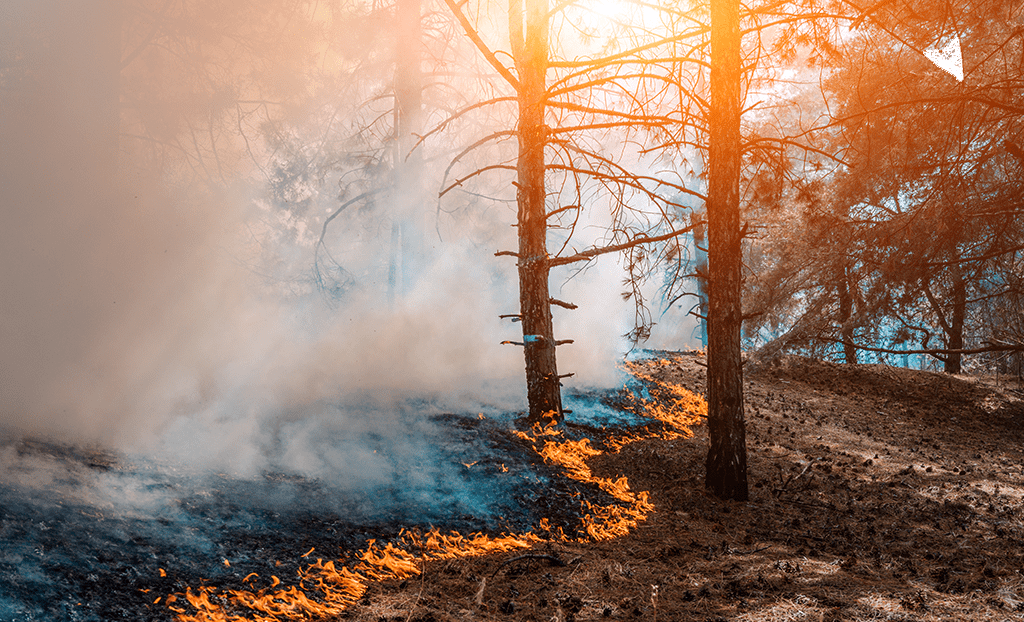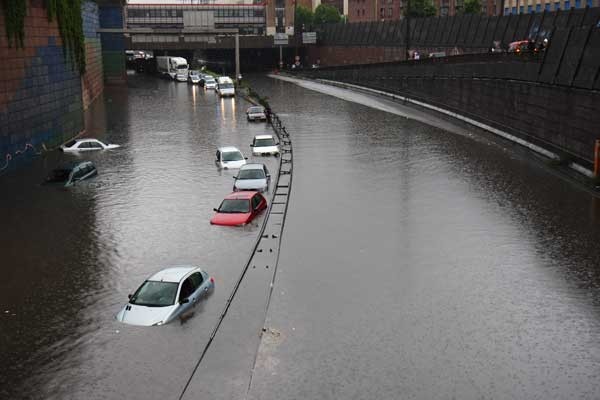Blog
I Had to Evacuate My Home During a Wildfire. Here's What I Learned.
The nation’s western states have experienced a record-breaking number of severe wildfires in 2020. Since August, drought conditions have been fueled by thunderstorms, strong winds, and, in some cases, human error to ignite widespread fires across California, Oregon, Washington, and Colorado.

Homes, businesses, forests, parklands, and even entire towns have succumbed to the intense flames. Hundreds of thousands of people have had to flee their homes, often with little notice. I am one of them.
When I looked out my window last September, I saw numerous firetrucks whizzing past my home in Oregon City, Oregon. Wanting to know what was going on, my husband and I jumped in the car. We soon encountered a firefighter, who urged us to evacuate immediately.
Although I am one of the lucky ones, we got out in time to escape a fast-moving wildfire—I learned some powerful lessons. Since I am in the insurance industry, I now have a first-hand perspective from which to guide clients who might face a similar emergency.
Climate scientists tell us that we can expect more severe wildfires due to higher temperatures and increased drought potential. Therefore, those of us who live in the West must learn to plan for what might have once seemed to be the unthinkable. To be prepared means you must be proactive instead of reactive. Of course, the safety of your family members and your pets should be your top priority. But the proactive decisions you make now may also help save your home and your belongings in a wildfire.
6 Pre-Evacuation Steps During Wildfire Season
1. Make Sure Your Insurance Plan Has Wildfire Protection
Not long after we evacuated, my husband sent me a photo of a red AIG Wildfire Protection Unit truck on our property. He told me, “This is our insurance company—they’re working to protect our house.” It was the first good news I had heard in a long time, and I was so relieved.
So many people think insurance is a commodity—that it is the same product no matter how you get it. And that the only difference is the price. That’s not true at all. None of my neighbors had a Wildfire Protection Unit truck protecting their homes. But there was AIG, monitoring the fire for us and doing whatever they could to protect our home.
2. Prepare a 72-Hour Emergency Kit
Long before the threat of a wildfire, you should have an emergency bag packed and ready to grab at a moment’s notice. It’s a good idea to pack a bag for each member of the family; backpacks work great.
According to readyforwildfire.org, here’s what you should include in each kit.
- face masks
- three-day supply of non-perishable food
- three gallons of water
- printed map marked with two or more evacuation routes
- prescriptions or medications
- change of clothing
- extra pair of eyeglasses or contact lenses
- extra car keys
- cash, credit cards, or traveler’s checks
- first aid kit
- flashlight and extra batteries
- battery-powered radio and extra batteries
- hygiene supplies
- copies of important documents (passports, birth certificates, etc.)
Don’t forget your pets when gathering supplies. They will need food and water too. Have their bowls, leashes, and other necessary gear ready to go.
If you have more than a few moments to get out, grab these other items and place them in your car.
- family photos and other irreplaceable items
- laptops, cellphones, hard drives, and all chargers
- extra pair of sturdy pair of shoes
- blankets, pillows, and warm jackets
Speaking of your car, try to maintain at least a half tank of gas at all times. Gas stations are likely to be closed during a fire emergency.
3. Protect Important Documents
We had our records ready to take with us in a portable safe. However, not even waterproof, fireproof safes can withstand sufficiently intense fires. Keep copies in the portable safe and store originals in a safety deposit box.
4. Prepare a Home Inventory
In the few minutes we had before evacuating, I rushed through each room of my house, taking photos on my cellphone. A much better—and less stressful—plan is to maintain a home inventory.
A home inventory is a record of all the things you own in your home. Just think about it. If the worst has happened—your home is completely destroyed—would you be able to remember and report everything you own? Sure, you’d recall the big items, like your TV and your computers. But what about your artwork and jewelry? And what about all the cookware and kitchen items that would be expensive to replace?
You can organize your list by item (clothing, appliances, sports equipment, etc.) or by location (garage, living room, master bedroom, etc.)—whatever method is easier for you. To make things easier and to keep your list safely stored online, there are a number of mobile home inventory apps. Or check with your insurance carrier to see if they offer a free home inventory app for clients.
An effective home inventory should include photos (or videos), receipts, and descriptions of your items. You’ll want to update it annually as you purchase new things or in the event you move to a new home.
5. Remove Flammable Items From Your Home’s Exterior
One of the tasks the AIG fire prevention specialists did for us was to cut down and remove some fallen limbs near our house. They also put fire retardant tape around crevices or openings to block fiery embers.
Overhanging tree branches and bushes or foliage that are touching your home can serve as fuel for a fire. Take the time now to cut it back or remove it. Also, clear away leaves and debris from decks, patios, porches, roofs, and gutters.
6. Have a Planned, Safe Destination
My husband and I had the stress of having to evacuate twice. That’s because the fire was moving so fast that our first location was soon under evacuation orders as well. Don’t make the same mistake we did and move as far away from the approaching fire as you possibly can.
Also, plan for at least two ways out of your community. Roads can get backed up quickly with traffic during an emergency, so it’s critical to become familiar with alternate routes. However, you should always follow the instructions of firefighters and officials since they know the safest way. Keep in mind that, as we have learned through some of the harrowing escapes during the 2020 fire season, the best evacuation route may sometimes be on foot. That’s why sturdy shoes are a necessity.
Any time you go through an experience yourself, it makes it easier to place yourself in someone else’s shoes. I’ve been there. I now know exactly how someone is feeling when a disaster is threatening their home. I know because I felt all those feelings, too. I was overwhelmed, scared, panicky, and frustrated. Now I want to use my experience to help others. I hope you find these tips helpful.
At Woodruff Sawyer, we protect the lifestyles and assets of successful families just like we would our own. You can learn more about our Private Client services here. For more information on how you can prepare for a wildfire, visit the government evacuation resource site and Ready for Wildfire.
Author
Table of Contents









